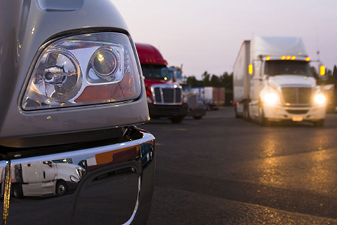|
By Dean Croke, DAT Solutions
One of the unbreakable laws of transportation economics is that when there aren't enough trucks to meet demand, freight rates will go up. And when freight rates go up, more trucks will come into the market, causing freight rates to go down.
This cycle generally occurs every 18 months, although the COVID-19 pandemic has disrupted the timing.
With spot truckload freight rates at all-time highs, fleets are trying their hardest to add capacity. Sales of Class-8 trucks—the type used in most over-the-road freight haulage—totaled nearly 192,000 units in 2020, down 30% from 2019, but roughly half of those orders occurred during the final quarter of the year when truckload rates were on a historic climb. Class-8 sales are forecast at around 240,000 units in 2021 even though most manufacturers filled their build slots for the year by April.
Not enough trucks
Shortages of semiconductors and other components have restricted the flow of new trucks coming off the production line and delayed deliveries, leaving fleets short of equipment. And the used-truck market offers little relief.
Buying a three- or four-year-old highway tractor coming off a lease or trade can be an economical way to add capacity, especially for smaller carriers and owner-operators. But used truck prices are "completely through the roof," said Chris Visser, senior analyst and product manager, commercial vehicles, at J.D. Power.
The number of trucks sold at auction was up moderately in September, due to a combination of more auctions on the calendar and slightly more trucks returning off trade, according to J.D. Power's latest commercial truck report. But sales of the three most common sleeper-cab tractors (three to seven years old) at the two largest nationwide no-reserve auctions in September jumped 171% compared to August.
"The sense of urgency is as strong as ever in the auction lanes, with buyers continuing to pay essentially retail pricing for desirable trucks," Visser said. "Expect the rest of the year to feel similar."
Skyrocketing prices
How much does a used truck cost at auction?
A 2019 model-year tractor fetched an average of $106,110 in September, up 87% year over year. A
|

2016 model-year tractor averaged $58,792, an increase of 128% compared to September 2020. Bidders are paying close to $15,000 more for a used sleeper tractor this year versus last year.
Desirable used trucks also remain scarce at retailers. According to J.D. Power, dealers sold an average of 4.4 trucks per rooftop in September, 0.4 truck lower than August.
In the meantime, the price of used equipment keeps climbing. Late-model trucks—three- to five-year-old sleeper tractors—have appreciated 4.9% per month on average in 2021 to date. In the first nine months of 2021, the average retail price of a used truck is now 30.6% ahead of the same period in 2020, and 10.4% ahead of the same period in 2019.
It's important to note that older trucks are more likely to require repairs (as opposed to routine maintenance), don't have the same warranty protection as new and tend to be less fuel efficient (diesel prices are at a seven-year high).
Expect high rates to continue
That said, strong used truck pricing into 2022 is essentially guaranteed because virtually anything capable of hauling commercial freight is such a hot commodity. For all the headlines about supply chain disruptions and high transportation costs, capacity remains the key to where truckload rates go in the months ahead. Even if there were an adequate number of trucks available, the trucking industry continues to struggle with its ability to attract and retain qualified professional drivers.
As long as there's a delivery backlog for new trucks, and an inadequate supply of desirable used trucks, the current state of tight capacity means it's unlikely we'll see a decline in truckload rates any time soon.
Dean Croke is the principal industry analyst at DAT Freight & Analytics, which operates the industry's largest digital marketplace for truckload freight, and a data analytics service based on $110 billion in annual spot and contract freight transactions. For information, visit dat.com.
|


